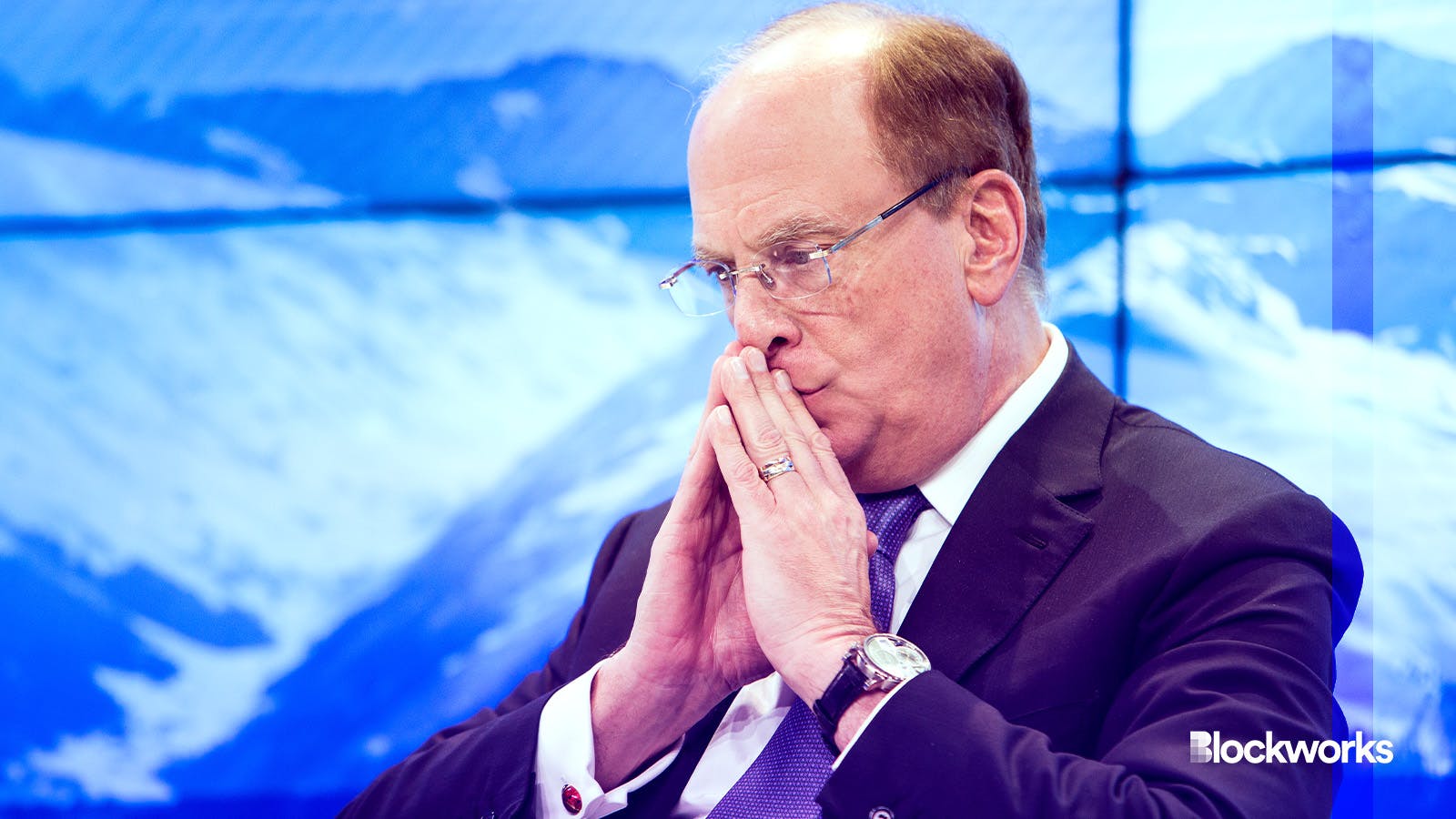A month after launch, spot bitcoin ETF weekly net inflows hit new high
The net inflows into US spot bitcoin funds nearly doubled from $700 million to $1.2 billion week over week, as GBTC outflows continue to slow

BlackRock CEO Larry Fink | World Economic Forum / Sikarin Thanachaiary/"Impressions at the Annual Meeting 2018″ (CC license)
Bitcoin spot ETFs in the US just hit a new record for weekly cash flow as they wrapped up their first month on the market.
Last week, these funds received approximately $1.2 billion in assets. BitMEX research reports that this nearly doubles the $700 million from the week before. This increase coincides with a slowdown in withdrawals from another major Bitcoin fund, the Grayscale Investments’ Bitcoin Trust ETF (GBTC).
The fastest-growing US spot bitcoin funds also made ETF history.
Fidelity Investments’ Wise Origin Bitcoin Fund (FBTC) eclipsed $3 billion in assets last week, joining BlackRock’s iShares Bitcoin Trust (IBIT) in that club.
Read more: BlackRock-Fidelity bitcoin ETF asset race ‘a heavyweight fight that can go either way’
No other ETF — over three decades and more than 5,000 launches — has reached the asset level hit by IBIT and FBTC within a month after launch, according to Bloomberg Intelligence analyst Eric Balchunas.
The list excludes mutual fund-to-ETF conversions and GBTC, Balchunas added in an X post, noting that such funds can bring over pre-existing assets. GBTC, for example, had about $28 billion in assets when it converted to an ETF on Jan. 11. That total has fallen to about $22 billion.
IBIT and FBTC had grown to about $4.2 billion and $3.5 billion in assets as of Friday, BitMEX Research data indicates.
Two other US spot bitcoin funds — the Ark 21Shares Bitcoin ETF (ARKB) and the Bitwise Bitcoin ETF (BITB) — made the list of top 25 asset gatherers in their first month. ARKB hit the $1 billion assets under management mark, while BITB was at $860 million, BitMEX Research data shows.
In addition to this rapid growth, the segment’s four flow leaders have seen net inflows every day during their first month of trading — a phenomenon Balchunas said was “literally unprecedented.”
Some have compared the new bitcoin ETFs to the largest physically backed commodity ETF: State Street Global Advisors’ SPDR Gold Shares (GLD), which launched in 2004.
Read more: To gauge impact of bitcoin spot ETF, analysts look to gold
But ETF.com data shows that GLD saw positive net flows during just eight days in its first month trading — a stat highlighted by Bitwise Chief Investment Officer Matt Hougan in a Friday X post.
“The sustained demand we’re seeing in bitcoin ETFs is remarkable,” Hougan wrote.
Overall, global crypto investment products brought in $1.1 billion, according to CoinShares data, driven by the $1.2 billion into US spot bitcoin funds. The net inflows surpassed those seen during the prior week when $708 million entered crypto products.
Outflows endured by GBTC decreased to about $415 million last week — down from $927 million the week before.
Read more: New bitcoin ETFs overcome GBTC asset losses, yielding strong inflow week
Matteo Greco, a research analyst at Fineqia International, observed a significant decrease in daily outflows from GBTC. Initially, when it started trading as an ETF, outflows were around $500 million during the first two weeks. Last week, this figure dropped to roughly $83 million, marking an almost 85% decline.
“The substantial reduction in GBTC outflows began on Jan. 26, coinciding with the beginning of a consistent influx into BTC spot ETFs, resulting in 11 consecutive days of net inflows,” he wrote in a Monday research note.
The slowing outflows from GBTC and continued assets entering IBIT and FBTC and others has been a driver of bitcoin’s recent price appreciation, Greco added.
Bitcoin’s (BTC) price was at about $48,700 at 10 am ET on Monday — up 12.5% from seven days ago.
Get the news in your inbox. Explore Blockworks newsletters:
- The Breakdown: Decoding crypto and the markets. Daily.
- 0xResearch: Alpha in your inbox. Think like an analyst.






